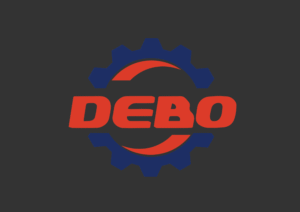Welding is one of the most widely used and essential joining methods in modern manufacturing. From heavy machinery, aerospace and automotive components to precision electronic devices, medical instruments, and metal microstructures, welding plays a vital role in efficient and permanent metal joining.
As demands for high-efficiency and precision manufacturing continue to grow, welding technologies are evolving toward greater accuracy, lower heat input, and automation. This article explores the principles, classifications, strengths, and limitations of welding, providing valuable insight for engineers, product developers, and manufacturing decision-makers.
What Is Welding and Why Is It Important in Precision Manufacturing?
Welding is a process that joins materials—typically metals—by applying heat, pressure, or both, to cause atomic-level bonding. It is not just a method of connection but also an effective way to integrate and optimize structures.
In precision manufacturing, welding has expanded far beyond traditional structural applications. It is now a critical joining technique in micro-welding, battery assembly, medical device production, and high-strength, lightweight design applications. Typical uses include:
- Stainless steel microtube welding in surgical instruments
- Battery tab and housing connections in energy storage systems
- Automotive body and chassis welding
- Precision enclosures and aluminum frames
- Micro laser welding in electronics and sensors
Ⅰ. Common Welding Methods in Industry
Welding can be classified into several types based on the heat source, pressure requirement, and filler material used. The main categories include:
- Fusion Welding
Examples: Arc Welding, TIG (Tungsten Inert Gas) Welding, MIG (Metal Inert Gas) Welding, Laser Welding
- Melts the base metals to form a joint
- No pressure applied
- Suitable for most metal types
- Pressure Welding
Examples: Resistance Welding, Friction Welding, Ultrasonic Welding
- Joins materials through pressure and heat/friction
- Produces minimal deformation
- Ideal for thin sheets and small components
- Brazing and Soldering
Examples: Copper Brazing, Silver Brazing, Soft Soldering
- Uses a lower melting filler metal without melting the base metal
- Suitable for dissimilar metals and delicate assemblies
- Minimal thermal distortion
Ⅱ. Advantages of Welding in High-Efficiency Precision Manufacturing
Welding offers many strengths that make it suitable for a wide range of precision and industrial applications:
- Strong, Permanent Joints
Welded connections can often match or exceed the strength of the base metal, making them ideal for load-bearing parts.
- Design Flexibility
Welding supports point, seam, and full surface joining, allowing for versatile design and integration options.
- Lower Assembly Cost
Compared to mechanical fastening (e.g., bolts, screws), welding reduces material use, simplifies design, and lowers part count.
- High Automation Potential
Welding processes such as robotic MIG welding or laser welding can be easily automated for high-speed, consistent output.
- Broad Material Compatibility
From carbon steels and stainless steels to aluminum and titanium alloys, welding offers effective solutions for nearly all engineering metals.
Ⅲ. Disadvantages and Challenges of the Welding Process
Despite its wide use, welding comes with certain limitations, especially when applied to high-precision or sensitive products.
- Heat-Affected Zone (HAZ)
Welding introduces a heat-affected zone that can cause grain growth, softening, hardness variation, and residual stress, which may compromise component integrity.
- Welding Distortion and Spatter
Thin-walled parts or high-precision structures may deform due to thermal stress. Traditional methods may also produce visible spatter or slag.
- Aesthetic Limitations
Some welding methods may leave visible seams, discoloration, or surface marks that do not meet the visual requirements of high-end products.
- Skill and Equipment Dependence
Manual welding requires experienced operators, while automated systems such as laser welding involve high equipment costs and setup complexity.
- Non-Reversible Joints
Unlike bolted or riveted joints, welded parts cannot be easily disassembled for repair or replacement.
Ⅳ. Welding Method Comparison and Application Guide
| Welding Method | Precision | Heat Input | Cost | Suitable Materials | Typical Applications |
| TIG Welding | Medium–High | Moderate | Medium | Stainless steel, aluminum | Pipe welding, thin-wall structures |
| MIG Welding | Medium | High | Low | Carbon steel, stainless steel | Automotive body, large structures |
| Laser Welding | Very High | Very Low | High | Stainless steel, aluminum, titanium | Battery packs, electrical parts |
| Resistance Spot Welding | Medium | Low | Medium | Steel sheets, stainless | Car body, panel joining |
| Silver Brazing | Medium | Very Low | High | Copper, aluminum, stainless | Medical connectors, precision instruments |
Ⅴ. Emerging Trends in Welding for Precision Manufacturing
To meet the rising demand for precision and high-efficiency welding, the industry is moving toward:
- Laser Welding with Smart Control – Delivers precise energy input, auto-alignment, and seam tracking
- Robotic Welding Systems – Ensure consistency, speed, and reduced manual labor
- Low-Temperature Solders and Brazing – Ideal for heat-sensitive components
- Hybrid Welding Technologies – Combines laser and arc welding for deep penetration with high speed
- Real-Time Welding Monitoring – Enables defect detection and traceability via digital quality control
Ⅵ. Conclusion: The Role of Welding in Modern Precision Manufacturing
Welding remains an irreplaceable joining process in many sectors due to its strength, efficiency, and structural benefits. It is particularly effective for medium- to large-scale metal assemblies requiring durability and performance.
However, manufacturers must consider its potential drawbacks—such as heat-induced distortion, surface quality, and cost of equipment—especially in high-precision applications. Balancing welding process selection, heat input control, and automation level is key to achieving optimal product quality and manufacturing efficiency.
In some cases, a combination of welding and precision machining or alternative joining techniques may provide the best solution.


